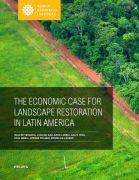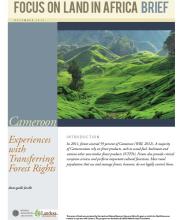Land Library Search
Through our robust search engine, you can search for any item of the over 73,000 highly curated resources in the Land Library.
If you would like to find an overview of what is possible, feel free to peruse the Search Guide.
/ library resources
Showing items 1 through 9 of 10.Mapping Together helps people use Collect Earth mapathons to monitor tree-based restoration. Collect Earth enables users to create precise data that can show where trees are growing outside the forest across farms, pasture, and urban areas and how the landscape has changed over time.
By declaring the Decade on Ecosystem Restoration, the UN has recognized that there are only 10 years left to restore the world's degraded land. Countries are striving to fight climate change by 2030 through their Paris Agreement commitments and the Sustainable Development Goals (SDGs).
Community land, crucial to rural livelihood around the world, is increasingly targeted by commercial interests. Its loss can lead to environmental degradation, increased rural poverty and land disputes that last for years.
Degraded lands—lands that have lost some degree of their natural productivity through human activity—account for over 20 percent of forest and agricultural lands in Latin America and the Caribbean.
In a world grappling with the challenges of food insecurity, climate change, landscape degradation, and rural poverty, regreening offers a path forward, especially in dryland areas.
La seguridad de la tenencia, definida como la certeza de que los derechos sobre las tierras de una comunidad serán reconocidos y protegidos si se los cuestiona, está relacionada con una gran cantidad de beneficios para las comunidades y la sociedad en general.
In 2011, forests covered 59 percent of Cameroon (WRI, 2012). A majority of Cameroonians rely on forest products, such as wood fuel, bushmeat and various other non-timber forest products (NTFPs). Forests also provide critical ecosystem services and perform important cultural functions.
More than two billion hectares of the world’s deforested and degraded landscapes are likely to offer potential for restoration — a vast opportunity to reduce poverty, improve food security, reduce climate change, and conserve biodiversity
This lesson brief explores the decentralization of wildlife user rights and their impact on loca






